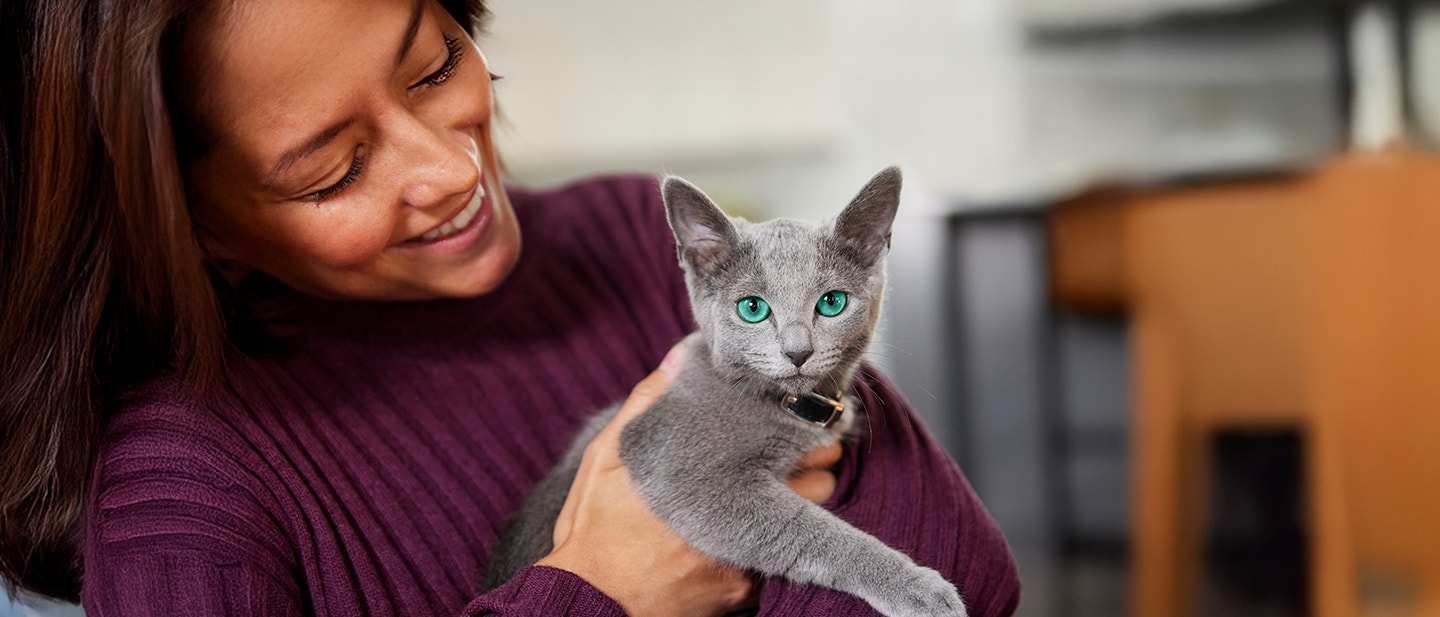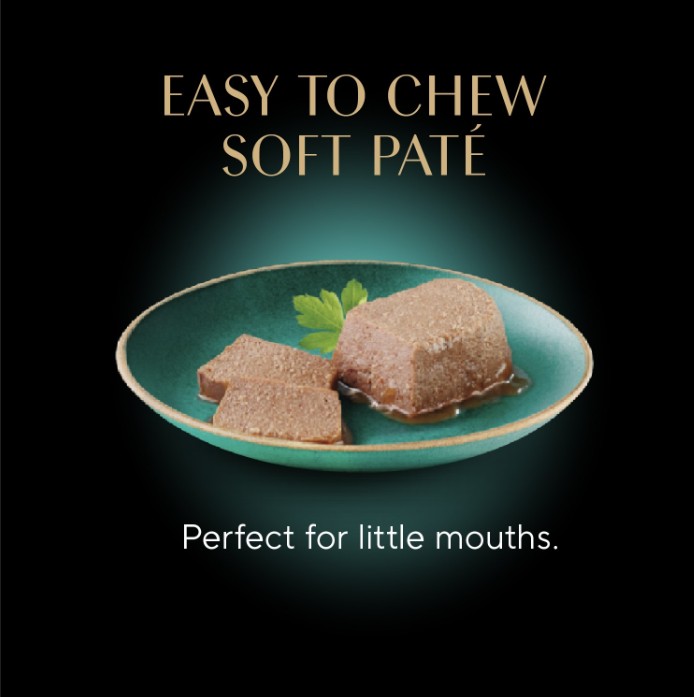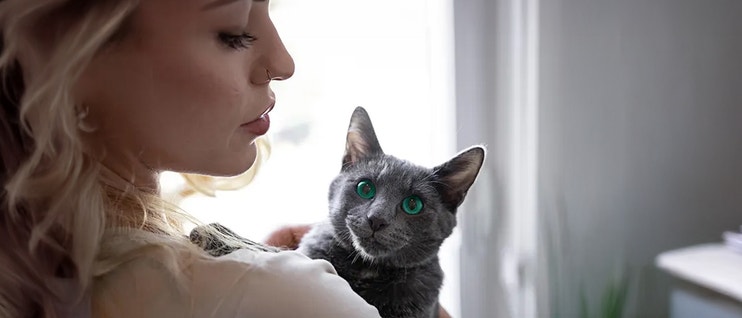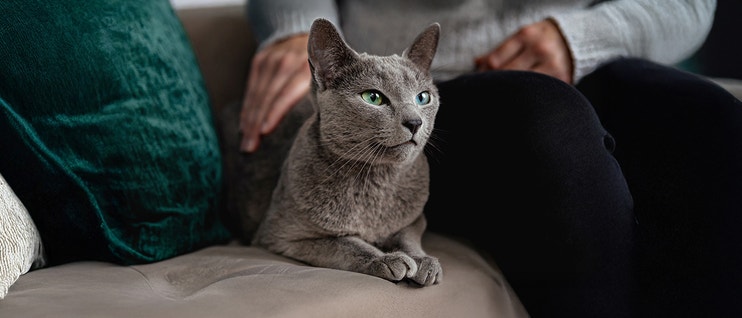
Kitten Development Milestones by Weeks & Months
Are you curious about the kitten milestones your new feline friend will go through on their way to adulthood? We’ve got all the details.
Learn what to expect at each age and how your kitten will develop week by week and month by month.
Kitten Milestones
Newborn
Size: Depending on their breed, your kitten can weigh anywhere from 1.8 ounces to 5.3 ounces and will be so small that they’ll probably fit in the palm of your hand.
Physical Characteristics: When they’re first born(open in new tab), your kitten’s eyes will be closed, their ears will be folded down, and they won’t have any teeth in their mouth. In essence, they’ll be blind and deaf for a while until they reach future kitten milestones.
Eating: Your kitten should drink their mother’s milk or a complete and balanced milk substitute every few hours.
Behavior: A newborn kitten will spend most of its time sleeping, eating, and mewing for mom. But don’t worry. All of that rest and nutrition helps them grow big and strong!
Their movement will consist of wriggling and briefly lifting their head to feed.
Care Guidelines: Keep your kitten warm and in close proximity to its mother at all times.
One Week Old
Size: Around the first full week of their life, your kitten will start to quickly gain weight and grow in size. Depending on their breed, they’ll likely weigh between 5.3 ounces and 8.8 ounces.
Physical Characteristics: Their eyes and ears will remain closed to protect their sensitive organs and they won’t have any teeth in their mouth.
At this point, you may notice they’re starting to hold their head up for longer than they did when they were first born.
Eating: Your kitten should still drink their mother’s milk or a complete and balanced milk substitute every few hours.
Behavior: Like the first few days of its life, your kitten will spend the majority of its time sleeping and eating.
Care Guidelines: Continue to keep your kitten warm and in close proximity to its mother.

Two Weeks Old
Size: At two weeks old, your kitten will likely weigh between 8.8 ounces and 12.3 ounces.
Physical Characteristics: The two-week mark is one of the first kitten milestones that make your furry friend look significantly different than when it was born. Why? Because their eyes and ears will begin to open!
Most cats have blue eyes when they’re born, but this will change as they get older. And at two weeks, they’ll still not have any teeth because they’re depending on mom for all their nutrition.
Eating: Your kitten should continue drinking their mother’s milk or a complete and balanced milk substitute, but at this point, they may be able to go three to four hours between meals.
Behavior: While they’ll still spend a lot of time sleeping and eating, you may also notice your kitten start to take their first wobbly steps.
Care Guidelines: Keep your kitten warm and in close proximity to its mother as much as possible, but give them room to start exploring their environment.
Four Weeks Old
Size: At this age, your kitten is likely between 12.3 and 16.2 ounces (they’ve cracked a pound!).
Physical Characteristics: Your kitten’s eyes are probably still blue, and their outer ears are now fully formed (though vision and hearing are still developing and improving).
Incisors will continue to emerge, but you may also see their canine teeth poking through. You may also notice that they start to protract (extend) and retract their claws(open in new tab).
Eating: At this point, you may notice that mamma cat starts to wean her kittens — either forcing them to go longer between meals or making the meals shorter than they were in the previous weeks.
Behavior: At four weeks, your kitten will be walking fairly well and may be ready for you to start training them to use their litter box.
They’ll also be more engaged with the world around them and willing to play with any toys you give them.
Care Guidelines: Give your kitten a nice warm place to sleep and plenty of access to its mother, but also give them room to move and explore.
Five Weeks Old
Size: By this point, your kitten most likely weighs 1.2 to 1.4 pounds.
Physical Characteristics: Though your kitten’s eyes stay blue, their vision and hearing will continue to get better.
Their incisors and canines will continue to grow, and their premolar teeth will start to emerge so they can begin to transition to more solid food.
Eating: Week five is a major kitten milestone because mamma cat may stop feeding them altogether or cut way back on the milk she does give. In response to this, you should start to introduce wet kitten food into their diet.
The best way to make the transition is to mix wet food with a complete and balanced milk substitute and feed it to them in a small bowl four to seven times per day.
For more information on this big step in your kitten’s life, check out this article from the SHEBA® blog: Kitten Feeding Guide: How Much to Feed a Kitten(open in new tab).
Behavior: By week five, your kitten should be running and playing confidently.
Care Guidelines: Give your kitten plenty of time with its mother if possible, but more of the feeding responsibility will fall on you now. It’s also important to give your furry friend lots of love, pets, and personal interaction with you so they’re comfortable around humans.

Eight Weeks Old
Size: By eight weeks old, your kitten likely weighs anywhere from 1.9 pounds up to 2.1 pounds.
Physical Characteristics: At this stage, your kitten’s eyes will have started to change (or will have completely changed) from blue to their adult color, and all their baby teeth will have grown in.
Eating: From week six on, continue to feed them wet kitten food, but use less and less milk substitute to wean them off liquids. By week eight, your kitten may be eating wet food exclusively (or well on their way to that kitten milestone).
Behavior: Your kitten will be energetic, fully coordinated, and curious about the world around them.
Care Guidelines: Give your kitten plenty of opportunities for play and interaction with toys, other kittens, and the humans in your family so they continue to grow and develop their social skills(open in new tab).
Four Months Old
Size: Your kitten will do a lot of growing between eight weeks and four months and, depending on the breed, can weigh up to 3.7 pounds.
Physical Characteristics: Your kitten’s physical milestones (i.e., the development of their physical characteristics) will be pretty much complete by this point and they’ll start to exhibit their own unique personality(open in new tab).
They will continue to gain weight and grow in size, but their vision, hearing, teeth, and claws are done growing.
Eating: Feed your kitten complete and balanced wet kitten food or dry kitten food three times per day.
Behavior: From eight weeks to four months, kittens will continue to be curious and playful. They will love playtime and exploring their environments. However, they will start to behave more like young adult cats as well.
Care Guidelines: Continue to socialize your kitten with new people, animals, and environments.
Twelve Months
Size: By twelve months, your furry friend will have reached their final kitten milestones because they’ll be considered a full-grown adult!
They’ll be close to their breed’s ideal size and weight. Talk to your vet for more information.
Physical Characteristics: There aren’t any more physical kitten milestones to look forward to, but your cat will continue to gain weight and grow in size for the next few weeks as they transition into the adult stage of their life.
Eating: Between 10 and 12 months, you can start to transition your kitten from kitten food to adult cat food.
If you’ve been feeding them wet kitten food, the best way to switch to adult food is to mix wet adult food(open in new tab) into the wet kitten food and gradually increase the amount until they’re exclusively eating adult food.
They may also want to eat less often and only take one or two meals per day.
Behavior: When they reach the adult stage of their life, they’ll likely be less playful(open in new tab) and start to spend more time on their own sleeping.
Care Guidelines: Your adult cat still needs lots of love and socialization from you, so don’t be afraid to initiate play(open in new tab) and cuddle time with your furry friend!

Good Nutrition for Kitten Milestones
Regardless of their age and the kitten milestones they go through, good nutrition is key for your feline friend’s overall health and happiness.
Once your little bundle of joy is off their mother’s milk, feed them kitten food made with high-quality ingredients(open in new tab) so they get the nutrition they need to grow big and strong.
SHEBA® KITTEN SOFT PAT(open in new tab)É is nutritionally complete and specifically formulated for growing kittens. Our wet food for kittens comes in two delicious flavors — chicken(open in new tab) and salmon(open in new tab) — and is enriched with vitamins, minerals, and essential nutrients.
So, don’t just give them what they need at mealtime; give them what they want. And SHEBA is what cats want™.




